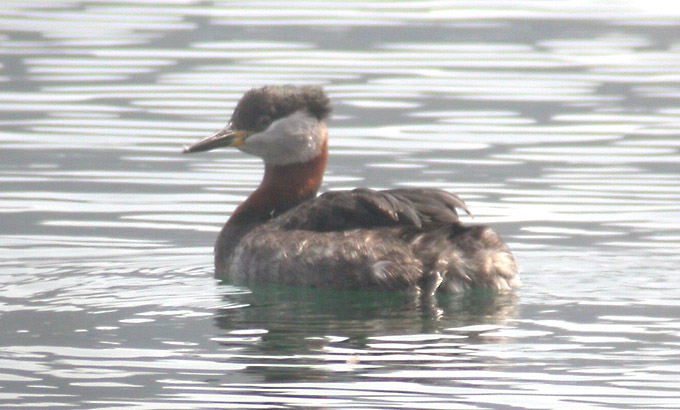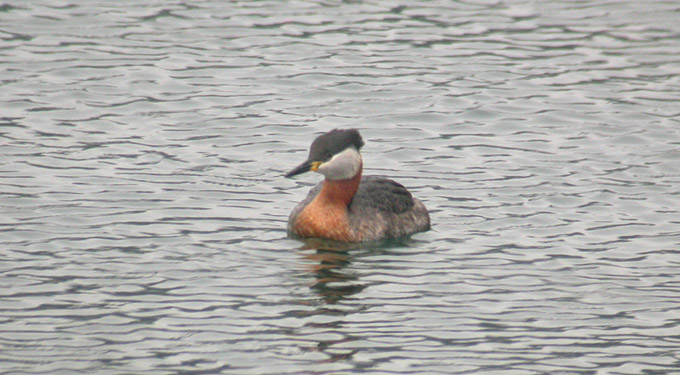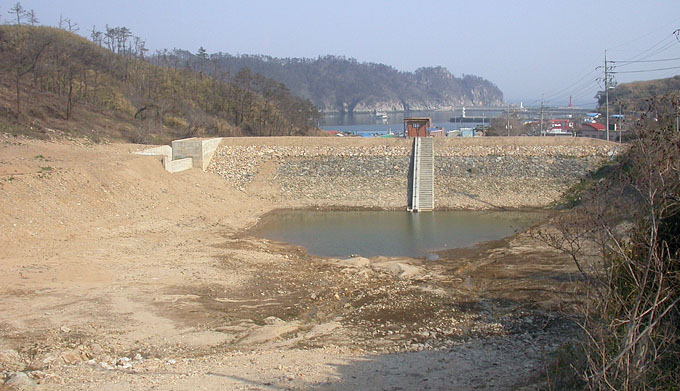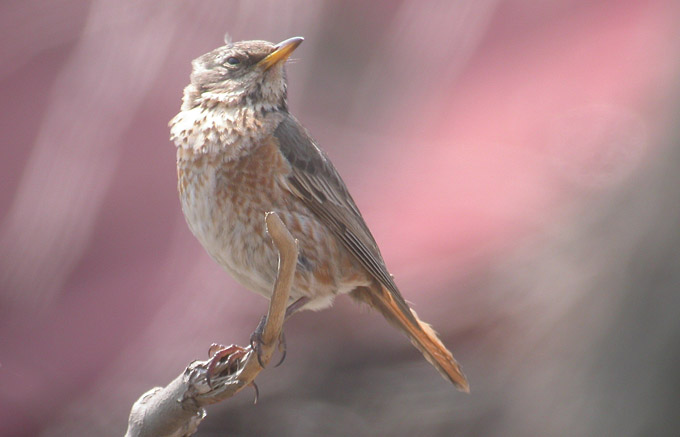Bird news from Nial Moores
April 14, Eocheong Island
Ahead of some forecast rain, still rather few birds, with most numerous landbirds Dusky Thrush (70), Brambling (30) and Siberian Stonechat (23). Of most note were single Mandarin Duck, Arctic Loon and Red-necked Grebe in the harbour still; now two Black Redstart (one male and one female); one baicalensis White Wagtail still (along with single lugens and ocularis and a few leucopsis); and the personal first Red-billed Starling, Brown-headed Thrush, Blue-and-white Flycatcher and Eastern Crowned Warbler (all singles only) of the spring, with the latter oddly showing only the weakest hint of a crown stripe.
Three different islanders today – without any kind of solicitation – stopped me to say that “these days” there are very few birds compared to “before” on the island.

Red-necked Grebe Podiceps grisegena. Photo copyright Nial Moores
Naumann’s Thrush Turdus naumanni. Photo copyright Nial Moores
April 13, Eocheong Island
Return to Eocheong for one month, to count migrants over the same dates as in 2003 in order to compare numbers of birds between years. In calm and hazy conditions, only small numbers of the expected migrants but several interesting species, with best for the day a female Black Redstart, a Yellow-bellied Tit (heard only), two baicalensis White Wagtail, a Eurasian Wryneck and single Arctic Loon and breeding-plumaged Red-necked Grebe in the harbour.

Red-necked Grebe Podiceps grisegena. Photo copyright Nial Moores
Much habitat has been lost since my first visit back in 2002, and the first birding tour later the same month. Close to the village, changes include a boardwalk and two additional shop ramps breaking up the beach/tidal-flat; “clearing” of some of the stream, and especially a former sheltered suntrap there; “extension” of the reservoir (presently largely empty of water); neglect of or construction material covering probably half of the arable plots; concrete roads replacing several narrow trails; loss of most of the berry bushes and trees in the “gardens”; and the die-off of most of the pine forest (much of which was cleared above the village, presumably to reduce the threat of fire). On the plus side the quarry is no longer in operation.


